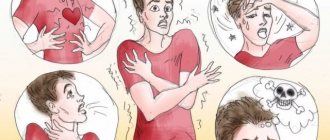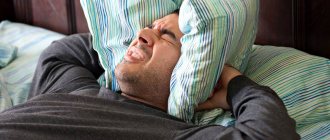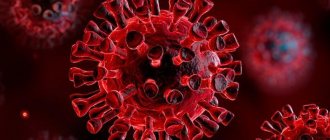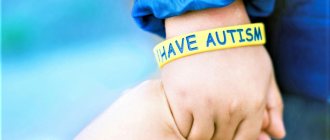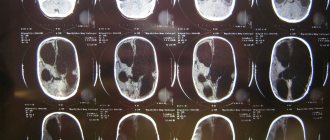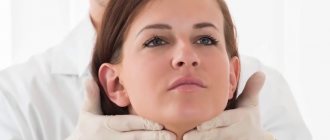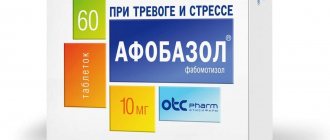Panic attacks in children are characterized by separate episodes, lasting about 20 minutes each. The appearance of fear and anxiety is known to all people, but if such a condition occurs regularly and the patient is not able to control what is happening, then a serious persistent disorder occurs.
The emergence of a feeling of fear is a manifestation of the normal reaction of the human body to being in stressful situations. In a normal state, the feeling of anxiety recedes after the root causes are eliminated. But, as the results of many studies show, about 4% of the population experience regular panic disorders. And among this category of patients, a significant proportion are children.
Why do panic attacks in children need to be treated?
In childhood, the foundations of physiological and psychological health are laid.
The appearance of certain disorders can have a negative impact on the rest of a person’s life. The negative consequences of panic attacks in childhood are: phobias, isolation, fear of social contacts, etc. Not to mention the fact that against the background of strong psychological experiences, somatic diseases often appear (diseases of the cardiovascular system, gastrointestinal tract, etc.).
d.).
In a word, a child suffering from panic attacks always urgently needs the attention, understanding, love and care of loved ones, as well as qualified help from a child psychologist or psychotherapist. Don't leave your child alone with their fears!
Causes of PA
Fear is a natural reaction of the human body to dangerous situations. She helped our ancestors survive. When a person is in danger, his body prepares to react to it: to fight or run away.
When the brain receives many danger signals, a structure called the amygdala is activated. It takes part in the formation of fear.
The body releases large amounts of stress hormones: they increase heart rate and breathing, and increase blood pressure. The sympathetic department of the autonomic nervous system is activated: it works in relation to the body like a gas pedal, including the stress reaction and defense mechanisms.
In some people, during severe fear, the parasympathetic part of the autonomic nervous system predominates, which, on the contrary, works like a brake pedal.
There are different opinions on this matter. Some suggest that panic disorders are a consequence of the fact that children spend a lot of time in front of the TV, playing computer games, etc. Others believe that all psychological disorders are provoked by an unfavorable family environment.
The true causes of panic disorders in a child can only be identified by a child psychologist or psychotherapist. Thus, in order to diagnose “children’s problems,” our Center’s specialists conduct a series of consultations with the child, conversations with parents, and the necessary diagnostic examinations.
Only in this case can the nature of a particular disorder be identified and appropriate treatment prescribed.
As experience shows, the roots of most psychological deviations are in the sphere of our unconscious. Mental health disorders in childhood are no exception. That is why, in order to help a child cope with panic attacks, you should not give him sedatives, but accompany him to a child psychologist.
General information
Panic is a normal reaction of the body when a situation arises that is dangerous to life or health. Fear mobilizes body functions: adrenaline is released, the pulse quickens, the heartbeat accelerates, and the instinct of self-preservation is activated. A readiness to escape and attack is formed. In pathological cases, this chain of reactions starts without an external dangerous situation. The term “panic attacks” as a distinct clinical unit has been used since 1980; its synonyms are “panic disorder”, “paroxysmal anxiety”. In neurology, the disease is referred to as a vegetative-vascular crisis. The prevalence in the population is 3%. Among children, schoolchildren are more susceptible to the disease.
Stages, duration, exacerbation and severity of panic attacks. Panic attacks without panic - video
Over time, the manifestations of the disease change. This can happen at different rates, sometimes over months or even years, and sometimes over weeks. Typically, panic disorder goes through the following stages:
- “Poor” attacks, in which the symptoms are not very pronounced.
- Full-blown panic attacks.
- Hypochondria. Unable to find a logical explanation for his condition, the patient believes that he has a serious pathology and begins to visit therapists, neurologists, cardiologists and other specialists.
- Limited phobic avoidance. The patient identifies situations that, in his opinion, provoke attacks, and tries to avoid them. At this and later stages, many patients see a psychiatrist or psychotherapist for the first time.
- Extensive phobic avoidance (secondary agoraphobia). Symptoms that appeared in the previous stage become more pronounced.
- Secondary depression. A person becomes more and more convinced that he is not in control of the situation and does not know how to get rid of his illness. Attacks can happen anywhere, at any time, they destroy your personal life and career. All this leads to depression.
Young victims of adrenaline
Attentive parents always remember that before the onset of panic attacks, the teenager had a kind of “medical history.” She appeared in a “strange” state, which doctors attributed to age-related changes in the body. Many will also remember how they did not believe in the child’s “illness” and sent him to lessons with abuse, strongly recommending that he finish with pretense. The symptoms may indeed seem complicated, but, unfortunately, often these symptoms become harbingers of imminent panic attacks:
- Short-term surges in blood pressure and pulse.
- Low-grade fever (37 degrees) for a long time.
- Lethargy and...
- "Cotton wool" in the head and...
- and depression.
- Meteor dependence.
The fact is that every teenager, without exception, undergoes a global restructuring of the body. Sometimes the body grows so rapidly that the vessels simply do not have time to stretch and supply all organs with the required volume of blood: hence the weakness with low blood pressure and weak legs. And the central nervous system is just learning to maintain a balance between its two departments, which is why a teenager’s blood pressure is so unstable, as is his mood.
Children's panic attacks often occur after experiencing nervous shocks or chronic stress. Children living in dysfunctional family environments are especially often affected by disorders. Panic attacks are promoted by parental alcoholism, poverty, and irresponsibility. Another stress factor can be misunderstanding at school, physical violence, and difficulties with teachers.
IsraClinic consultants will be happy to answer any questions on this topic.
- a normal reaction of the body to fear - a situation that is dangerous to life or health. Under the influence of fear, a rapid mobilization of body functions occurs - adrenaline is released, the pulse quickens and the heartbeat quickens, and the instinct of self-preservation is activated. The body is ready to help a person overcome an extreme situation. But under the influence of stress, increased anxiety or other negative factors, a malfunction occurs, and the self-preservation mechanism turns on without objective reasons - this is called a panic attack. Today, according to statistics, panic attacks affect from 3 to 5% of the world's population, mainly residents of large cities. Panic attacks are experienced not only by adults, but also by children, mostly of school age. Recently, the age of panic attacks has been decreasing more and more, this is due to an increase in psycho-emotional stress on the child, his earlier socialization, family problems, etc.
Panic attacks in children
In childhood, panic attacks are most often situational. Children are especially susceptible to insults, humiliation, pain, and insult. Emotional upheavals in childhood leave a deep imprint on a person’s entire subsequent life.
What to do to protect a growing person from panic?
- Firstly, you should have the warmest possible relationship with your child, protect him from stress in every possible way, and not overexert him.
- Secondly, it is very delicate to teach him to adequately relate to different situations, new people, and events, even if he doesn’t like them.
- Thirdly, it is necessary to constantly support and raise his self-esteem.
It is important for parents to identify panic attacks in children in time, understand their causes, and treat them properly. It is very important to have an action plan that is agreed upon with doctors. Remember that even minor fears in a child’s life tend to develop into more complex problems.
A characteristic feature of panic attacks in adults and children is the spontaneity of attacks. There is no real danger objectively.
Yet the child experiences a sudden episode of intense anxiety. The strength of the experience varies from mild psychological discomfort to a pronounced feeling of fear, transforming into the fear of loss of self-control, madness, and death.
The attack usually lasts about 15 minutes. But it may take longer.
A panic attack in a child has the same symptoms of disruption of the autonomic system as in adults:
- increased heart rate;
- pain, burning in the chest area;
- increased sweating;
- numbness, tremor of the limbs;
- dry mouth;
- difficulty breathing;
- feeling of lack of air;
- paleness of the skin;
- stomach discomfort;
- attacks of nausea;
- problems with coordination of movements;
- dizziness;
- disorientation in space;
- pre-fainting state.
At a younger age, vomiting, diarrhea, and involuntary loss of urine are observed. Crying during an attack is uncharacteristic. Screams, sobs, and groans may be observed. After the attack ends, the child feels weak, looks tired, and may cry.
Panic attacks in older children provoke the development of extreme hypochondriasis. Children are worried about cardiac arrest and difficulty breathing. They begin to be visited by thoughts of serious fatal diseases.
Panic attacks in children usually occur during the daytime, while they are awake. Seizures in sleep also occur, although much less frequently.
Panic attacks in some children occur before going to bed or during the first minutes of sleep, as well as when waking up at night. In this case, insomnia is added to the manifestations of the disorder.
Panic attacks in children exclusively at night are quite rare. .
Children are special patients. Diagnosis of most psychological disorders in early, preschool, and school age is complicated by the fact that it is difficult for a child to express his feelings in words.
It is sometimes difficult for him to explain exactly what he feels, to clearly indicate the localization of pain. Children usually express physiological or psychological discomfort by crying.
This is why panic attacks always cause shock, both in children themselves and in their parents. What happens to the child?
• severe anxiety,
• fear,
• trembling,
• dizziness,
• pain in the chest area,
• vomit,
• increased sweating, etc.
In such cases, most parents immediately call the local pediatrician or emergency doctors. But, as practice shows, a true diagnosis is not made immediately.
First, children are referred to all specialists (pediatric cardiologist, gastroenterologist, neurologist, etc.), prescribed sedatives, taken all tests, etc. When, first of all, the child needs to be accompanied to a child psychologist, who, using methods adapted for the recommended age, will be able to determine the causes and nature of certain psychological disorders.
Naturally, only a professional specialist will provide quality assistance. Child psychologists and psychotherapists at our Center have the necessary qualifications and many years of experience working with young patients.
Currently, psychotherapy is recognized as the only safe and at the same time highly effective method of treating panic attacks in children. The specialists of our Center use various psychocorrectional methods of work.
One of the most effective is the MTTM (Mental Technology of Triple Modeling) technique. The advantages of correcting psychological disorders using MTTM are, first of all: safety, effectiveness, and painlessness.
Sign up for a consultation
Diagnostics
Diagnosing a panic attack in a young child is made difficult by the child’s lack of understanding and the necessary knowledge to explain to adults and to himself what is happening. During PA, the child only experiences boundless horror. For parents, the situation also becomes stressful. Not understanding what is happening to their baby, they call an ambulance. Doctors, of course, do not diagnose a mental disorder. And the baby is sent for examination to a large number of specialists (neurologist, cardiologist, endocrinologist). If, along with PA, there is a somatic disease, the diagnosis becomes more complicated. This primarily applies to asthma, since a panic attack can trigger an attack, and vice versa.
Possible complications
Paroxysmal anxiety is a fairly serious mental disorder, which without proper treatment can lead to the development of dangerous complications. Among the mental and somatic disorders that PA can lead to are the following conditions:
- Neuroses.
- Epilepsy.
- Diseases of the heart and blood vessels.
- Neuralgia.
- Fainting, which greatly increases the risk of injury.
Untreated PA can also cause prolonged depression in a child. The patient may develop various fears and phobias.
At the same time, the teenager’s social adaptation suffers greatly. He may abandon his studies and stop communicating with peers. Many patients suffer from the fear of leaving the house and finding themselves helpless.
You might be interested in: Weight gain in a newborn by month
Treatment of panic attacks
Which doctor should I contact?
In order to understand which specialist you need to contact for panic attacks, you first need to understand what the difference is between a psychologist, psychiatrist and psychotherapist:
- A psychologist is a specialist who has a psychological education, but is not a doctor. He does not have the right to diagnose or prescribe medications. The competence of a psychologist includes conversations and trainings designed to help people with psychological problems.
- A psychiatrist is a doctor (a person with a medical education) who has specialized in psychiatry. He treats a special group of diseases called psychoses that meet certain criteria. The psychiatrist primarily uses medications.
- The psychotherapist has a medical education and specialization in psychotherapy. Many psychotherapists have worked as psychiatrists in the past. This specialist can use both psychotherapeutic (conversations, trainings) and medicinal techniques. A psychotherapist is the best person to treat panic attacks.
In most cases, you need to visit other doctors (therapist, cardiologist, neurologist, etc.) and undergo an examination to make sure that other diseases are not “masked” under the symptoms of a panic attack.
How to get rid of panic attacks?
Statistics show that some time after treating panic attacks with medications, more than half of patients experience relapses. An integrated approach is most effective when medications and psychotherapeutic techniques are used.
Sometimes panic attacks associated with certain situations can go away on their own. But most often, without the help of a doctor, the disorder progresses over time.
Depending on the patient's condition, treatment can be carried out in an inpatient setting or on an outpatient basis.
What parents can do
When PA appears, the child feels unprotected and vulnerable. Try to pay more attention to him and support him. A calm home atmosphere is especially important for such children. Try to come up with a common hobby, the main thing is to be close to the child. If he feels trust in you, he will be able to talk about his fears.
What can a doctor do?
In some cases, it is advisable to contact a child psychotherapist. The doctor will help determine the causes of panic attacks and identify the provoking factor.
The psychotherapist will tell you how to behave if a child suddenly develops PA, and how to communicate with such children. After making an accurate diagnosis and identifying concomitant diseases, the doctor can prescribe a course of treatment.
Taking medications in this case is aimed at blocking PA, reducing anxiety, eliminating vegetative symptoms and interrupting attacks. Combination treatment is considered the most effective, combining psychotherapy methods with the use of medications.
Treatment of PA in children is aimed at alleviating painful attacks. To exclude any other pathology that may have similar symptoms to panic attacks, the child must be examined by a therapist, a neurologist and a cardiologist.
Psychotherapy is considered the most effective method, especially if the child has had a panic attack more than once. For panic attacks, the following can be used:
- Cognitive behavioral therapy. Teaches you to “catch” panic thoughts in time and replace them with positive ones. Gives children the opportunity to understand their fear and explain it to adults.
- Emotionally oriented therapy. It is aimed at developing positive thinking in even very young patients.
- Art therapy. Allows psychologists to see the fears and anxieties of their patients through drawings. Helps relieve their accumulated tension in a short time.
Another type of treatment is medication. In order not to aggravate the anomalies, pharmacological drugs are prescribed exclusively by doctors, taking into account all the characteristics of the child and the nature of panic attacks. In particular, they are indicated in the early stages and/or with particularly severe characteristics of the ongoing processes.
Panic attacks in children have autonomic and psychological symptoms, and treatment involves alleviating both types of disorders. However, one cannot hope for the effectiveness of therapy until the provoking factor of PA is established. If there is a physiological pathology, it is necessary to direct all efforts to treat the disease.
Medication and psychological assistance
general information
Doctors call a panic attack an attack of fear that develops in a child or adult for no apparent reason or under the influence of any provoking factors. According to statistics, the duration of an attack is approximately 20-30 minutes. In this case, a person first develops an anxious state, which turns into panic.
The main symptoms of a panic attack include increased blood pressure, rapid breathing, and trembling in the limbs (tremor). Additional signs include disruption of the digestive system and changes in the nature of urination.
Prognosis and prevention
To prevent an attack of fear, you need to learn to cope with negative emotions and avoid conflict situations. You definitely need to increase your time in the fresh air and do physical exercise. You must strive to receive positive emotions. To do this, you need to include time in your schedule for outings with family or friends.
The information presented in the article is for informational purposes only. The materials in the article do not encourage self-treatment. Only a qualified doctor can make a diagnosis and make recommendations for treatment based on the individual characteristics of a particular patient.

